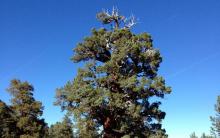Some plants are listed as some of the most poisonous in the world, and this may come as a surprise to people. After all, plants are usually perceived as something beautiful, and not something that brings death. Nature, however, knows how to give surprises.
Aconite
In 2014, a gardener mysteriously died from multiple organ failure. The cause of his death remains unclear, but all available evidence indicates that he was the victim of a poisonous plant of the ranunculaceae family. The plant in question is aconite, which has very beautiful flowers, shaped like monks' hoods. But this plant is also known by other names - "wolf killer", "devil's helmet" or "queen of poisons". These names hint at how cruel aconite can be, as it is actually listed as the deadliest plant in the world. The most poisonous part of the plant is the roots, although the leaves can also cause damage. Both roots and leaves contain a neurotoxin that penetrates the skin upon contact. The first symptoms of poisoning are tingling or numbness at the site of contact, or nausea and diarrhea if the plant has been eaten.
Killer properties

In 2010, Lakhveer Singh was accused of premeditated murder of his lover after he added aconite to a curry he prepared. In addition to severe gastrointestinal distress, this plant also causes a slow heart rate, which can lead to death. However, not every case is so unfortunate. According to poisonous plant specialist John Robertson, the mechanism of nausea provides protection from danger enough that people can survive the poisoning and tell about their mistake. "I've talked to people myself who have eaten wolfsbane and survived," Robertson said. - This was a couple who decided to plant aconite to make their garden more colorful and attractive. And when the wife was collecting leaves for salad, she accidentally collected several aconite leaves. They both suffered greatly within twenty-four hours, but still survived.” The most popular theory is that the toxins evolved in this plant as a means of defense. In the case of some plant species, the chemicals they produce to repel small insects and other microorganisms can also harm larger animals.
Reinforcing conditions

The effects of the poison on humans can become stronger due to a phenomenon called “phototoxicity.” The plant's chemicals get on human skin and then react with the sun that hits them, leaving severe burns. Hogweed is the plant that has the worst reputation for this, but even the most common ones, such as carrots, celery and lime, can leave burns on your hands under the worst circumstances. One of the most inviolable species, regardless of weather conditions, is the tree, the most dangerous of all existing ones. The manchineel tree grows in northern South America, and in some places it is even marked with a warning red cross. The milky sap produced by this tree contains the powerful irritant phorbol. Even if you lightly brush against it as you walk by, you could end up with terrible burns on your hand. And if you hide under this tree from the rain, the effect will still be terrifying - even milky sap diluted with rainwater can cause a very severe rash. But burning these trees is also not recommended, since the smoke from a burning manchineel tree can temporarily blind a person and cause serious breathing problems.
Deadly Fruits

However, although the effects are unpleasant, contact with the tree will not kill you. The real death threat comes from its small round fruits. The name of these fruits is translated from Spanish as “little apple of death.” If you eat this fruit, you will experience severe nausea and diarrhea, which will not stop until your body is drained of all fluids and you die. If we are talking about plants that should not be put in your mouth, then one of them is worth mentioning separately. The castor bean is a shrub that is highly prized for adding a unique and impressive feel to any garden thanks to its colorful palm-leaf-shaped leaves, which range from green to purple, and its prominent seed capsules covered in sharp spines. . Castor oil, which is familiar to many who periodically cleanse their gastrointestinal tract, is produced from the seeds of this plant. However, in the Latin name Ricinus communis you can see what you should be wary of - ricin. It is this substance that has won this plant the world reputation of being the most poisonous in existence.
Ricin

The residues that are not used in the creation of castor oil contain an impressive cocktail of toxins. For example, ricin itself kills, by interfering with cell metabolism, a basic process that is necessary to maintain the body's functioning. The creation of vital proteins is blocked, which leads to cell death. Victims may suffer from nausea, diarrhea and seizures for up to a week until death inevitably occurs.
Legends
The fame of this poison is also reinforced by numerous references in fiction and beyond - from Agatha Christie's novels to the TV series Breaking Bad.











The most beautiful motorcycles in the world
Which sea is the cleanest in the world?
Top 10 Most Expensive Furs
The largest and most luxurious casinos in the world
Knightly orders of Europe XI - XIII centuries